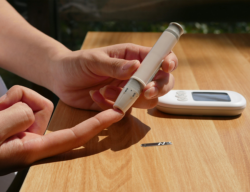The uterus has incredible elasticity: It has the ability to grow from the size of a fist to, well, the size of a baby. In recent years, there have been numerous debates over whether women who have had previous c-sections can or should deliver vaginally with subsequent pregnancies. The primary risk associated with a VBAC, or vaginal birth after cesarean, is uterine rupture. Though rare, at 2 per 10,000 deliveries, the American College of Obstetrics and Gynecology, issued practice guidelines requiring both the obstetrician and anesthesiologist be ‘immediately available’ during the entire delivery. This effectively eliminated the possibility of VBACs in US hospitals. As a result, VBACs have declined significantly since 1999 and the number of c-sections has increased to nearly 38% in some states.
In the UK, while the c-section rate is much lower, hovering around 23%, the question of VBACs still remain: Does the cesarean birth increase the risk for uterine rupture, and if so how much?
In March, 2012, the UK Obstetric Surveillance System (UKOSS) published a study that found 87% of women with uterine ruptures previously had cesarean deliveries. The risk of uterine rupture increased for those who had VBACS, as opposed to c-sections, (from .3 to 2.1 per 1,000 incidences). Women with two or more cesarean deliveries increased their chances of uterine rupture further, as did a shorter interval between c-sections (within 12 -24 months), labor induction using prostaglandin and/or the use of oxytocin during labor.
Though the scientists recognize that there may be some inaccuracies with the data (for example, they relied on data provided by participating hospitals, and therefore may have omitted some data), the information can still help expecting mothers start a dialogue with their doctors to prepare for future deliveries.






















